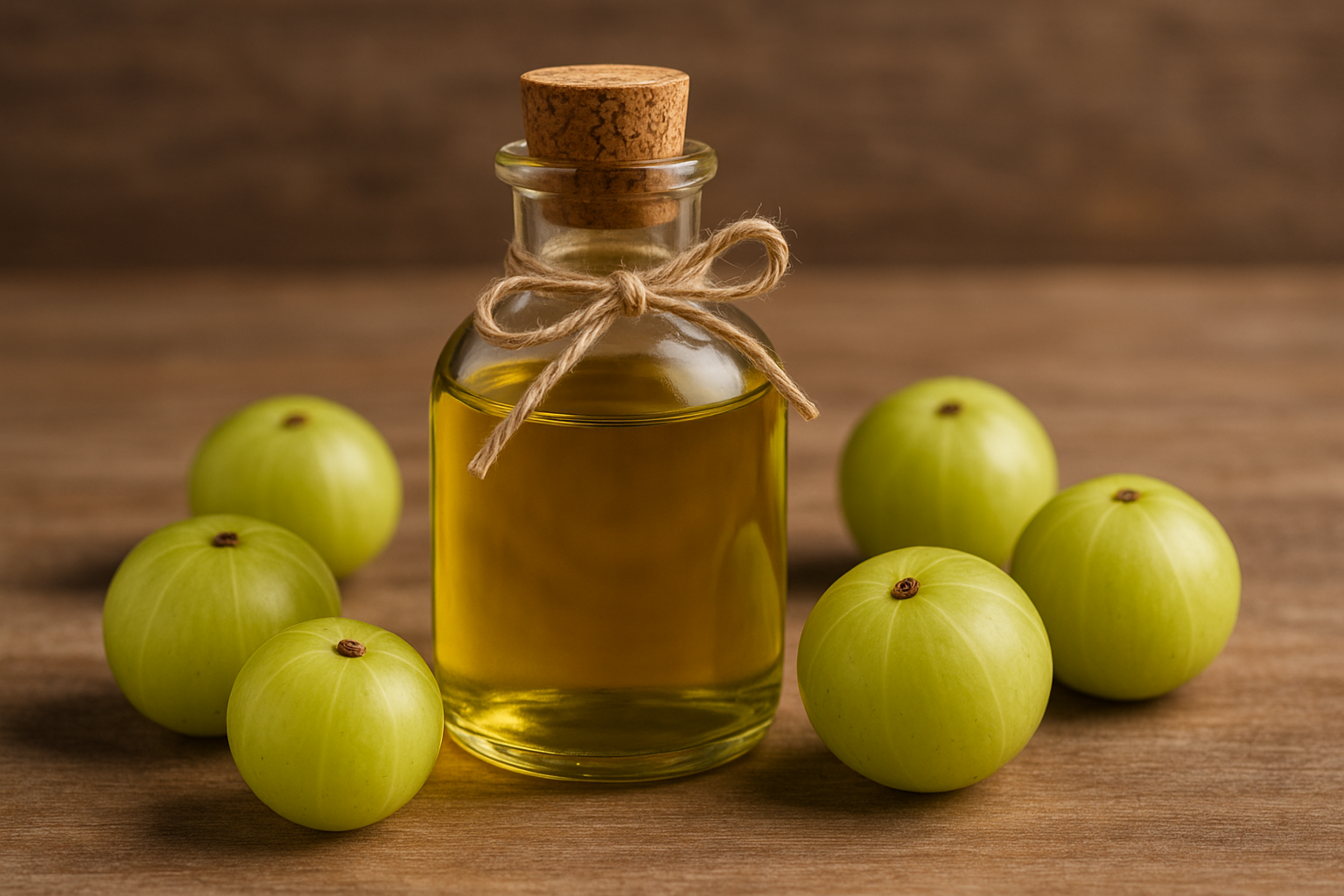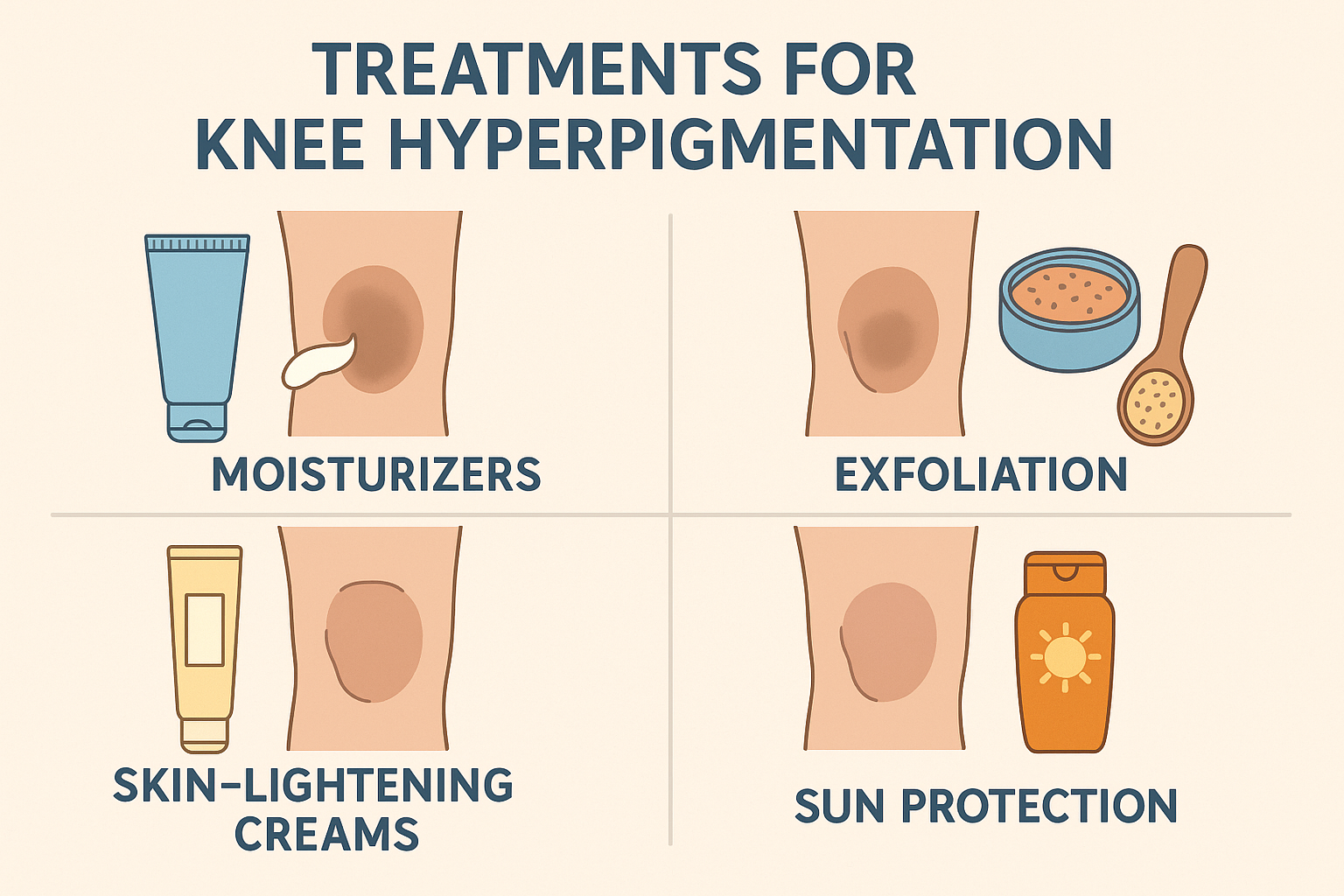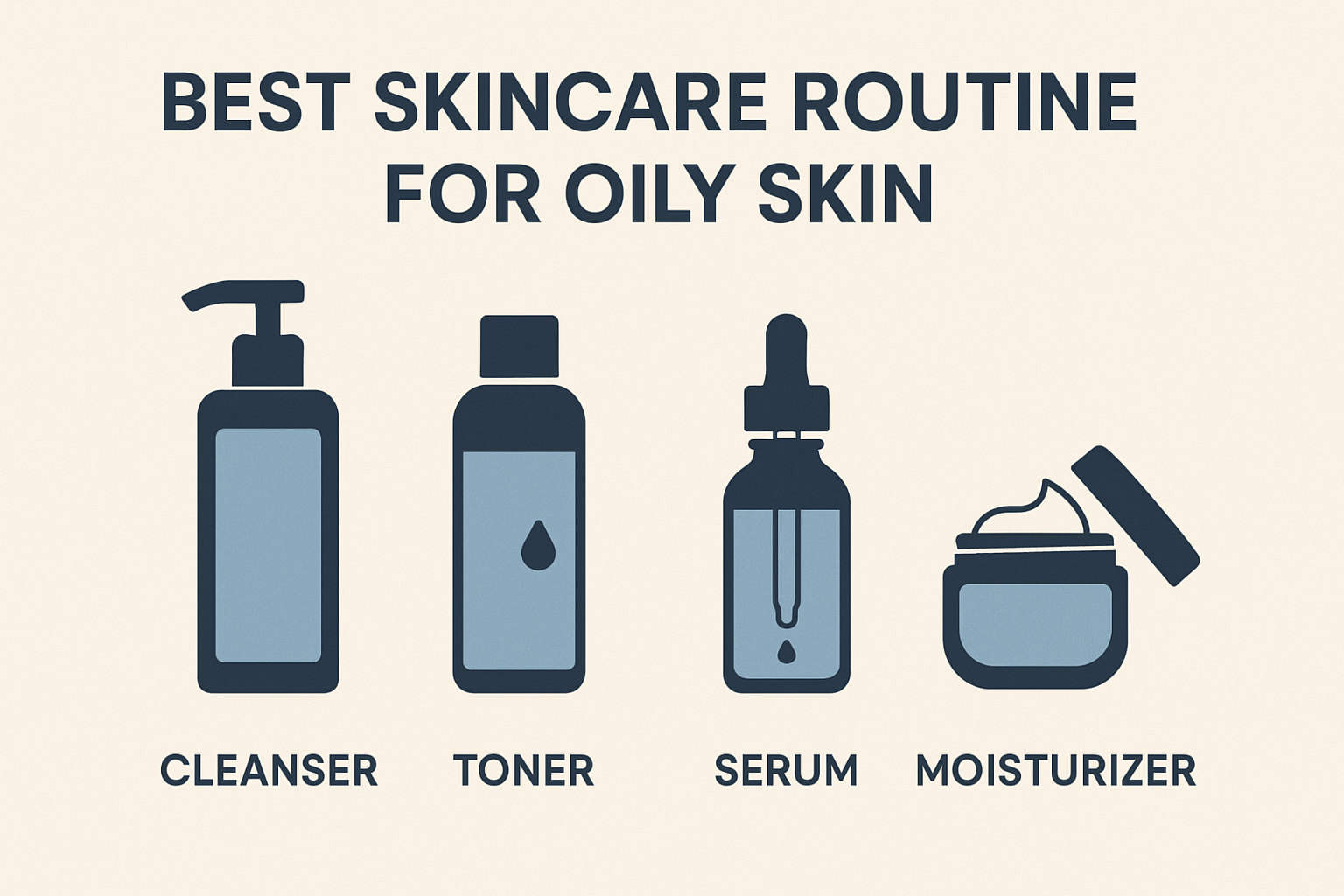Amla Oil for Hair: How to Use It & Key Benefits Revealed

Healthy, strong hair doesn’t always require expensive treatments or the latest beauty trends. In the world of Ayurvedic medicine, amla oil—derived from the Indian gooseberry (Phyllanthus emblica)—has long been celebrated as a natural remedy to strengthen roots, stimulate hair growth, and reduce hair fall. Today, its benefits are increasingly recognized by modern dermatologists and medical experts alike.
What makes this oil stand out in haircare is its rich content of vitamin C, powerful antioxidants, and phytonutrients that support both scalp health and hair shaft strength. According to dermatologists, regular use of amla oil can help balance scalp oil production, prevent dandruff, and naturally enhance your hair’s shine.
In this article, we’ll explore how to use amla oil effectively and dive into its key benefits—with a practical, science-backed approach tailored for your daily routine.
What Is Amla Oil?
Amla oil is a natural extract made from the fruit of Phyllanthus emblica, commonly known as Indian gooseberry. This fruit has been a staple in Ayurvedic practices for centuries and is now widely used in haircare formulations.[1Maryam Gul, Zhi-Wei Liu, etc. Functional and Nutraceutical Significance of Amla (Phyllanthus emblica L.): A Review. National Libarary of Medicine. 2022 Apr 22;11(5):816. doi: 10.3390/antiox11050816.] The oil is typically produced by infusing dried or fresh amla into a carrier oil such as coconut or sesame oil.
Traditionally, amla oil has been used as a tonic not only for hair health but also for digestive wellness.[2Yu JY, Gupta B, Park HG, et al. Preclinical and clinical studies demonstrate that the proprietary herbal extract DA-5512 effectively stimulates hair growth and promotes hair health. Evid Based Complement Alternat Med. 2017;2017:4395638. doi:10.1155/2017/4395638.] More recently, scientific studies suggest that certain active compounds in amla may help extend the anagen phase—the active growth cycle of hair follicles.[3Akhbari M, Firooz A, Rahimi R, Shirzad M, Esmaealzadeh N, Shirbeigi L. The effect of an oral product containing Amla fruit (Phyllanthus emblica L.) on female androgenetic alopecia: A randomized controlled trial. J Ethnopharmacol. 2024;318(Pt A):116958.] This could be especially beneficial in reducing hair loss, particularly in women experiencing thinning hair.
While anecdotal and early research points to several benefits—like stronger roots, new hair growth stimulation, and delayed greying—experts agree that further clinical trials are needed to confirm these claims definitively.
Top Benefits of Amla Oil for Hair
For generations, amla oil has been revered in Indian tradition as a go-to natural solution for hair concerns. Today, its benefits are supported by modern research and increasingly recommended by hair and scalp specialists.
Rich in vitamin C, antioxidants, and essential fatty acids, amla oil supports a healthy scalp environment, strengthens hair from the roots, and helps maintain natural shine and texture. Whether you’re new to haircare or exploring natural remedies, these are the top ways amla oil can transform your hair health:
1. Stimulates Natural Hair Growth
One of the most celebrated benefits of amla oil is its ability to promote natural hair growth. This effect is largely due to its high levels of vitamin C and antioxidants, which help improve blood circulation in the scalp. Better circulation delivers more nutrients to hair follicles—vital for strong, healthy hair growth.
Additionally, amla contains phytonutrients that are believed to extend the anagen (growth) phase of the hair cycle. According to dermatologists, consistent use of amla oil may encourage the regeneration of scalp cells and support the natural development of new hair strands—without the side effects common in synthetic treatments.
Pro tip: Gently massage warm amla oil into your scalp two to three times a week to boost absorption and stimulate growth naturally.
2. Helps Reduce Hair Fall Naturally
Hair fall can result from stress, poor nutrition, hormonal changes, or chemical damage. Amla oil acts as a calming, protective barrier for your hair roots. Thanks to its natural tannins and vitamin E, it strengthens follicle structure and helps reduce shedding over time.
Its anti-inflammatory properties also soothe irritated or stressed scalps—two common triggers for increased hair fall. By improving scalp hydration and reducing dryness, amla oil minimizes breakage and helps maintain a balanced scalp environment.
With regular use, amla oil not only helps reduce hair fall but also promotes resilience in each strand—making your hair more resistant to damage from daily styling or environmental stressors.
3. Strengthens Hair Roots Naturally
Weak hair roots are often the hidden cause behind breakage, thinning, and excessive hair fall. This is where amla oil shines—acting as a deep-nourishing treatment that strengthens your hair from the roots. Experts note that its rich content of essential fatty acids and polyphenols helps nourish the hair follicles directly while also repairing surrounding tissues.
Beyond physical support, the active compounds in amla oil protect the scalp and roots from oxidative stress and damage caused by heat styling or chemical treatments like hair dye. This strengthening effect leads to thicker, more resilient strands that can withstand everyday stress and styling.
Using amla oil as a hair mask once a week can be a simple yet powerful way to rebuild root strength and improve hair health naturally.
4. Adds Shine and Smoothness to Dull Hair
Dull, dry hair is often a sign that your strands lack proper hydration and nutrients. Amla oil offers a natural way to restore shine and smoothness—without relying on heavy synthetic products. Its vitamin C and omega-9 content help seal the hair cuticle, making each strand lie flat and reflect light more evenly.
According to dermatologists, applying amla oil topically creates a protective barrier that locks in moisture, making your hair feel softer and look healthier. Think of it as a natural alternative to silicone-based serums, but without harsh chemicals or buildup.
For best results, apply a few drops of amla oil to damp hair after washing. Focus on the mid-lengths and ends to add shine without weighing the hair down.
5. Helps Soothe Dandruff and Itchy Scalp
Flaky scalp and persistent itchiness can be frustrating, especially when caused by dryness or mild fungal infections. Amla oil offers soothing relief thanks to its natural antimicrobial and anti-inflammatory properties. These qualities help calm irritation and control the growth of dandruff-causing microbes.
Dermatologists highlight the oil’s cooling effect, which can ease scalp inflammation and reduce itchiness significantly. Plus, its linoleic acid and tannins help clear away dead skin cells and prevent the formation of white flakes over time.
To combat dandruff naturally, use amla oil as a pre-shampoo scalp treatment. Massage it in, leave it on for 20–30 minutes, then rinse thoroughly. Regular use can lead to a noticeably healthier and more comfortable scalp.
How to Use Amla Oil for Hair Effectively
Amla oil can be used both topically and as an oral supplement. However, when it comes to haircare, dermatologists strongly recommend topical application for better results.
Oral amla supplements are not yet fully regulated in terms of dosage and content, and their effects can vary widely. On the other hand, applying amla oil directly to the scalp delivers targeted benefits—such as improving scalp condition and nourishing hair follicles—more efficiently.
Here are the most common ways to use amla oil in your routine:
- As a Regular Hair Treatment
Apply amla oil directly to your scalp and hair shafts after performing a patch test. Leave it on for 15–30 minutes, then wash it off thoroughly with a mild shampoo. - DIY Hair Mask with Natural Ingredients
Mix amla powder with water or oil to form a paste. Gently massage into the scalp. For extra benefits, combine with herbs like turmeric, saffron, or bhringraj to boost its restorative power. - Pre-Wash Detangler and Moisturizer
Use before shampooing to soften tangles and hydrate the hair naturally. In a rush? Warm the oil slightly using a hair dryer to accelerate absorption.
Whether you’re doing a full treatment or a quick touch-up, consistency is key. Integrate amla oil into your routine 1–2 times a week to experience its full range of benefits.
Possible Side Effects
Amla oil is generally considered safe for topical use on the hair and scalp, with very few reports of serious side effects. However, like any natural product, it can still cause mild irritation—especially in those with sensitive skin.
Dermatologists recommend performing a patch test before full application. To do this, apply a small amount of oil behind your ear or on your neck and wait 24 hours to observe any reaction.
Possible signs of sensitivity include redness, itching, a mild burning sensation, or a rash. If any of these occur, stop using the product immediately and wash the area gently.
For those with a history of skin allergies or eczema, it’s best to consult a dermatologist before adding amla oil to your haircare routine—just to be safe.
Is Amla Oil Suitable for All Hair Types?
Yes—amla oil is generally safe and beneficial for all hair types, including straight, wavy, curly, and chemically treated hair. However, its most noticeable benefits are often seen on dry, brittle strands or oily scalps that need balance.
Thanks to its high levels of vitamin C, vitamin E, and antioxidants, amla oil works as a natural hydrator while protecting hair follicles from damage. In dermatology, these compounds are also known to regulate sebum (oil) production—making your hair look healthier without becoming greasy.
Many commercial amla oils are blended with other nourishing ingredients like almond oil and henna to strengthen the hair shaft while enhancing natural shine. These are commonly used as pre-wash masks or scalp massage oils.
For more intensive care, some formulas combine amla oil with adaptogenic ingredients like chaga mushroom or lightweight oils like jojoba. These are great for wet hair application—especially on the ends—to seal in moisture and prevent split ends, all without weighing the roots down.
If your hair is damaged from color treatments or heat styling, a lightweight amla-based formula can help restore smoothness, reduce frizz, and protect the cuticle naturally.
How to Use Amla Oil for Maximum Results
To get the most from amla oil, it’s not just about how often you use it—but how you apply it. Proper technique, timing, and consistency can all affect your results. Here’s how to maximize the benefits for your hair:
1. Step-by-Step Guide to Applying Amla Oil
Applying amla oil the right way helps ensure better absorption and deeper nourishment. Here’s a step-by-step guide trusted by both haircare experts and dermatologists:
- Warm the oil gently using a double boiler to make it comfortably warm—not hot.
- Massage into your scalp using circular motions for 5–10 minutes. This boosts circulation and opens up follicles.
- Distribute through the hair, focusing on the dry ends.
- Cover with a shower cap or warm towel to lock in moisture and create a mild steaming effect.
- Leave on for 1 hour to overnight, depending on your preference (see section below).
- Rinse thoroughly with a gentle, sulfate-free shampoo—you may need two washes to remove excess oil.
This routine works well for all hair types and can be customized based on your hair’s condition.
2. How Often Should You Use Amla Oil?
The ideal frequency depends on your hair type and specific goals. According to dermatologists, using amla oil 2–3 times per week is generally effective for maintaining healthy hair.
Here’s a quick guide:
- Normal hair: 2 times per week
- Damaged or thinning hair: 3 times per week
- Oily scalp or fine hair: 1–2 times per week to avoid buildup
It’s important to observe how your hair responds. If it feels greasy or heavy, reduce the frequency. If it still feels dry or brittle, increase use gradually—always monitoring how your scalp reacts.
Consistency is key. Long-term use, combined with a balanced diet and supportive haircare products (like sulfate-free shampoo), will yield the best results.
3. Overnight vs. 1-Hour Treatment: Which One Is Better?
A common question is: should you leave amla oil in overnight or just for an hour? The answer depends on your hair type and scalp sensitivity:
- Overnight treatment is best for very dry, damaged, or brittle hair. It allows deeper penetration and longer exposure to nutrients. But always do a patch test first to avoid irritation.
- 1-hour treatment is ideal for oily hair, beginners, or sensitive scalps. It still provides noticeable benefits without the risk of buildup or clogged pores.
If you choose an overnight treatment, wrap your hair in a clean towel or satin bonnet to prevent staining your pillow. In the morning, wash thoroughly with a mild shampoo—repeat if necessary.
Both methods are effective—feel free to alternate based on how your hair feels that week.
Easy DIY Amla Oil Recipe at Home
Prefer a natural, budget-friendly approach? Making your own amla oil at home is simple, effective, and ensures you control what goes into your haircare.
Here’s a basic DIY amla oil recipe you can try:
Ingredients:
- 2 tablespoons of dried amla powder (available at herbal shops or online)
- 150 ml carrier oil (choose from virgin coconut oil, sesame oil, or almond oil)
Instructions:
- Combine the amla powder and oil in a small saucepan.
- Gently heat on low for 10–15 minutes, stirring occasionally until the oil turns golden-brown.
- Allow to cool, then strain using a fine cloth or sieve.
- Store in a dark glass bottle in a cool, dry place.
This homemade oil can last up to two months and can be used just like store-bought amla oil—as a scalp massage oil or a weekly deep treatment mask.
Final Thought
If you’re just starting your haircare journey and looking for a natural, effective solution to nourish your scalp and strengthen your hair—amla oil is a smart place to begin. Backed by centuries of Ayurvedic tradition and supported by modern dermatological insights, amla oil offers a powerful blend of antioxidants, vitamins, and essential fatty acids that work for nearly every hair type.
From promoting natural hair growth and reducing hair fall, to soothing itchy scalp and restoring shine, the benefits of amla oil are both versatile and long-lasting—especially when used consistently with the right application techniques.
Whether you prefer a simple weekly massage, a DIY recipe, or a ready-made blend, adding amla oil to your routine can help you achieve healthier, shinier, and stronger hair—without the need for harsh chemicals or complicated steps.
Start small, stay consistent, and listen to your hair. Amla oil just might be the game-changing step your hair has been waiting for.
 Acne
Acne Anti-Aging
Anti-Aging Business
Business Digital Marketing
Digital Marketing Economics
Economics Exfoliation
Exfoliation Movies
Movies Personal Finance
Personal Finance Websites
Websites










